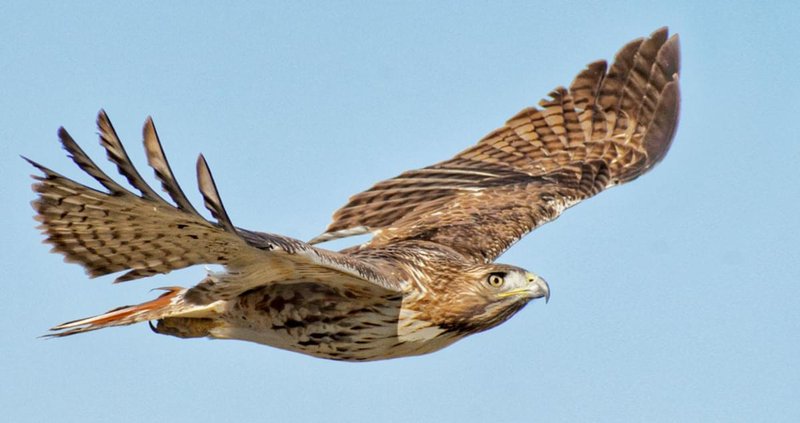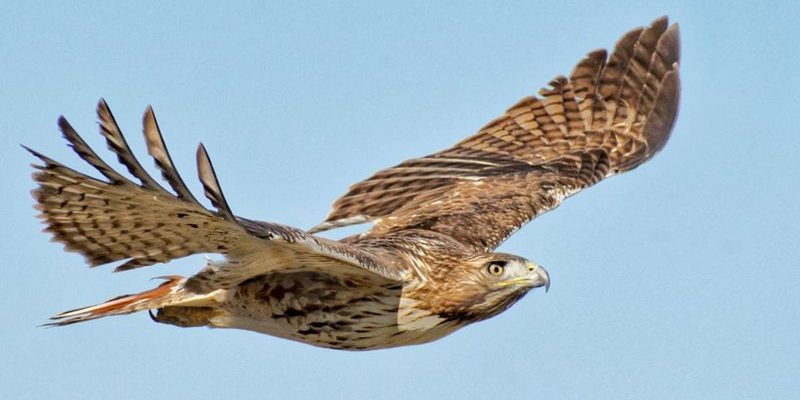
When we look at the red-tailed hawk, we’re not just observing an impressive bird of prey; we’re witnessing a fascinating evolution. This bird has adapted to various habitats and climates, making it one of the most successful raptors in North America. Think of it like a character in a book who evolves throughout the story. The red-tailed hawk’s journey is filled with change, survival, and adaptation.
In this article, we will dive deep into the evolution and history of the red-tailed hawk. We’ll explore its physical characteristics, habitat preferences, and even its role in different cultures. So grab a cup of coffee, and let’s soar into the world of this magnificent bird!
A Brief Overview of the Red-Tailed Hawk
The red-tailed hawk, scientifically known as *Buteo jamaicensis*, is one of the most common hawks in North America. It’s easily recognizable thanks to its distinctive rusty-red tail and large size. Typically, these hawks are about 18 to 26 inches long, with wingspans reaching up to 4 feet. Their plumage is another story; they come in various shades, from dark brown to light cream.
One of the standout features of the red-tailed hawk is its keen eyesight. This bird can spot prey from great distances—think of it as nature’s built-in binoculars! Their diet mainly consists of small mammals, birds, and even reptiles, which they hunt with remarkable precision. Honestly, it’s a testament to their adaptability. In many areas, you might spot them sitting on fence posts or electricity wires, surveying their territory for a meal.
These hawks are not just solitary hunters, either. They often mate for life, creating strong bonds. This behavior is not just endearing; it also aids in raising their young. Mated pairs work together to build nests, typically high in trees or on cliff ledges, making them safer from ground predators.
The Evolutionary Journey of the Red-Tailed Hawk
The evolutionary story of the red-tailed hawk is a fascinating one. It begins with the raptor lineage that dates back millions of years. Birds of prey, including hawks, evolved from earlier birds known as *archaeopteryx*. Over time, these birds adapted to various environments and prey types, leading to the distinct lineages we see today.
You might be wondering how the red-tailed hawk fit into this picture. It’s believed that this species diverged from other Buteo species around 3 to 5 million years ago. This adaptability allowed them to thrive in diverse landscapes, from deserts to forests. As climate and ecosystems changed, so did these hawks. They learned to hunt in different ways and exploit various food sources.
Interestingly, the red-tailed hawk’s ability to adapt has made it more widespread than many other hawk species. You can find them in the vast plains of the Midwest, the rocky mountains of the West, and even in suburban areas. This adaptability perhaps explains why they are often the first hawks people see when they look up in the sky.
Physical Characteristics That Aid Survival
As mentioned earlier, red-tailed hawks have some striking physical features. Their broad wings and large size give them the power needed for soaring and gliding, using thermal currents to stay aloft without much effort. The strong, curved talons are perfect for gripping prey, allowing them to dive at incredible speeds.
Their coloration also plays a crucial role in their survival. The variability in their plumage helps them blend into different environments, providing camouflage against potential threats. In open areas, their lighter feathers can help them remain unseen against the sky, while darker shades may help them hide in shaded forested regions.
Another interesting aspect of their physical characteristics is their unique vocalizations. The iconic series of high-pitched, screaming calls are not only a territorial display but also a way to communicate with mates. This vocal communication is essential during the breeding season when establishing their territory and attracting a partner.
The Red-Tailed Hawk’s Habitat and Range
When it comes to habitat, red-tailed hawks are incredibly versatile. They can thrive in a variety of environments, including forests, grasslands, and urban areas. These birds adapt well to changes, often seen perching on roadside poles or hunting in open fields.
You might see these hawks particularly in areas where there’s ample prey. They prefer locations where they can build their nests high up, allowing them to survey large areas. In urban settings, they might even take to tall buildings, turning cityscapes into their new hunting grounds.
Interestingly, red-tailed hawks are migratory in some regions. In the northern parts of North America, they may migrate south for the winter when food becomes scarce. However, many populations remain year-round in warmer climates, showcasing their adaptability to changing environments.
Cultural Significance of the Red-Tailed Hawk
The red-tailed hawk holds special significance in various cultures. For many Native American tribes, these birds are seen as symbols of strength, freedom, and vision. They are often associated with spiritual journeys and are viewed as messengers between the physical and spiritual worlds.
In popular culture, the red-tailed hawk has made its mark as well. You might find them depicted in art, literature, and even film, often representing the beauty and majesty of nature. Their call, unmistakable and haunting, is frequently used in movies to evoke a sense of wilderness or drama.
Interestingly, their presence in urban areas has also made them a subject of fascination for birdwatchers and wildlife enthusiasts. Many communities appreciate their role in controlling rodent populations and see them as part of the local ecosystem, further cementing their significance.
Conservation Efforts for the Red-Tailed Hawk
Despite their success as a species, red-tailed hawks face challenges. Urbanization and habitat loss threaten their populations in some areas. However, conservation efforts have been implemented to protect not just red-tailed hawks but the ecosystems they inhabit.
Organizations are working to preserve habitats, educate the public about these magnificent birds, and raise awareness about their role in the ecosystem. For bird enthusiasts, many communities offer programs to monitor hawk populations and educate others on how to spot them in the wild.
You might also encounter initiatives focused on safe nesting practices. For instance, creating platforms where they can build nests without interference from human activities is crucial. It’s all about balancing human development with wildlife conservation, ensuring that future generations can also experience the wonder of watching a red-tailed hawk soar through the sky.
The red-tailed hawk is more than just another bird of prey; it’s a creature that captures the hearts and imaginations of many. Its evolutionary journey showcases incredible adaptations that allow it to thrive in various environments. From their unique physical traits to their significant role in different cultures, they truly are remarkable.
As we’ve seen, the red-tailed hawk continues to inspire awe and wonder in people everywhere. By understanding and appreciating this species, we can help protect them and the ecosystems they inhabit. So next time you hear that distinctive call or see one soaring overhead, take a moment to appreciate the rich history and evolution behind the red-tailed hawk—a symbol of strength and adaptability in nature.

